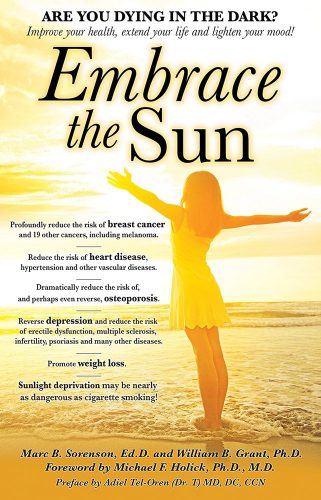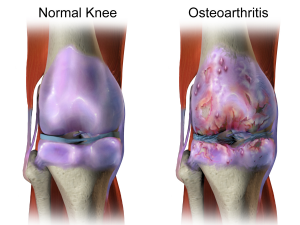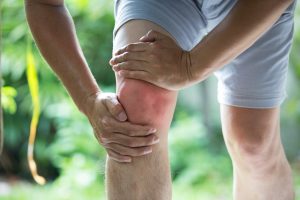Protect the children with sunshine. By Marc Sorenson, EdD.

Protect the children against illness? That is a great idea, and sunshine is one of the most effective “protectors” we can use.
“Children and arthritis” is not something we hear about because arthritis is thought to be an adult’s disease. Yet tragically, an estimated 294,000 children under age 18 have some form of arthritis or rheumatic condition. And this represents approximately 1 in every 250 children in the US.[1] Thus, we must be concerned and promote actions that protect the children.
Do we need to be even more concerned to protect the children in northern climes?
Also, the numbers of children with arthritis increase dramatically In Canada and the Northern U.S. This could be as a result of either vitamin D deficiency or sunlight deficiency or both. Since 90% of vitamin D blood levels are due to sunlight, it is likely that sun deprivation is the cause. So, if our desire is to protect the children, we must insist that they receive plenty of non-burning sun exposure. And in the winter, a vitamin-D producing sunlamp should be the first choice. When we use lamps to produce vitamin D, we also protect the children with other critically important photoproducts. Some of these photoproducts are endorphins, serotonin, nitric oxide brain-derived neurotropic factor (BDNF), dopamine and endorphin. And all of these photoproducts are necessary for health. So, to help the children, we should be sure that they have ample sunshine or light for the aforementioned sun lamps.
Articles from the UK and scientific journals help us to protect the children.
An article from the Express, a UK online newspaper, describes research published in the scientific journal, Annals of the Rheumatic Diseases. They state, “Millions of people could protect themselves from crippling arthritis by getting a regular dose of sunshine.” And although the research involved women, we can easily extrapolate to children, since mothers to a great extent, determine their children’s habits.
To learn more about arthritis and the influence of sun exposure, read this article (and others) posted on Sunlight Institute. First of all, go to the news section and search “arthritis.” You will find numerous articles on the subject. Also, read the book, Embrace the Sun.

Remember to obtain regular sun exposure to protect yourself
and to protect the children. Happy sunning!
[1] Centers for Disease Control and Prevention: arthritis-related statistics.
Osteoarthritis is also known as wear-and-tear arthritis. Yet, the disease is not common in parts to the world where people work hard with their joints to make a living. Rather, the disease is relatively rare. Thus, we would not consider too much work to be the cause. One would think that all of that work with the joints would lead to more wear and tear, no? Osteoarthritis is characterized by bone and cartilage degeneration in joints. This leads to pain and joint stiffness and can lead to disability. 
Vitamin D research.
Research has shown that those whose blood vitamin D measurements were in the middle and lowest thirds of serum vitamin D levels, had a threefold progression of osteoarthritis of the knee during a one-to-two year period. That is, when compared to those in the highest third. Low blood levels of vitamin D also predicted greater loss of cartilage in the joints.[1]
Other research demonstrates that in patients with arthritis of the knee, those with blood levels of vitamin D lower than 20 ng/ml (very low) have more disability. They also have more pain and more weakness than those with higher levels.[2], [3] Low vitamin D levels also correlate closely to greater knee pain and walking difficulty.[4]
Remember, unless it is stated that 25(OH)D levels are a result of supplementation or dietary sources, those levels are dependent on sun exposure. The research on osteoarthritis, discussed above, therefore, is really research on sun exposure.
Another horrific effect of arthritis.
Arthritic joints carry another devastating side effect. Hip replacement surgery is often prescribed for arthritic conditions: those people who go through total-hip-replacement procedures are 4.7 times as likely to have an ischemic stroke. They are also 4.4 times as likely to have a hemorrhagic stroke in the first two weeks post surgery.[5] Those stroke risks remain elevated for 6-12 weeks. The term “ischemic” means producing a local deficiency of blood supply by obstructing blood flow.
Sun exposure, therefore, has a protective effect against arthritis. Consequently, it has the potential to prevent hip-replacement surgery. In addition, it has the potential to prevent strokes.
Consider an article from the Express,[6] a UK online newspaper. It describes research published in the scientific journal, Annals of the Rheumatic Diseases,[7]stating the following: “Millions of people could protect themselves from crippling arthritis by getting a regular dose of sunshine. Scientists found that women with the highest levels of exposure to the sun – specifically Ultraviolet B (UVB) light – were 21 per cent less likely to develop the disease.”
Safely embrace the sun, help prevent osteoarthritis and safeguard your health.
[1] McAlindonTE, Felson DT, Zhang Y, Hannan MT, Aliabadi P, Weissman B, Rush D, Wilson PW, Jacques P. Relation of dietary intake and serum levels of vitamin D to progression of osteoarthritis of the knee among participants in the Framingham Study. Ann Intern Med 1996;125:353-9.
[2] Baker K, Zhang YQ, Goggins J. Hypovitaminosis D and its association with muscle strength, pain and physical function in knee osteoarthritis (OA): a 30-month longitudinal, observational study; American College of Rheumatology meeting; San Antonio, TX; Oct 16-21, 2004; abstract 17552. Also see http://www.medscape.com/viewarticle/538061
[3] Baker K, Zhang YQ, Goggins J. Hypovitaminosis D and its association with muscle strength, pain and physical function in knee osteoarthritis (OA): a 30-month longitudinal, observational study; American College of Rheumatology meeting; San Antonio, TX; Oct 16-21, 2004; abstract 17552. Also see http://www.medscape.com/viewarticle/538061
[4] Wang, J., Nuite, M., Wheeler, L.M., Badiani, P., Joas, J., Mcadams, E.L., Fletcher, J., Lavalley, M.P., Dawson-Hughes, B., Mcalindon, T.E. 2007. Low Vitamin D levels are associated with greater pain and slow walking speed in patients with knee osteoarthritis (KOA). In: American College of Rheumatology Scientific Meeting, 11/6/07-11/11/07, Boston, MA. 56(9supplement): S124. Accessed May 14, 2010 at http://www.ars.usda.gov/research/publications/publications.htm?SEQ_NO_115=211611
[5] Lalmohamed A, Vestergaard P, Cooper C, de Boer A, Leufkens HG, van StaaTP, de Vries F. Hip replacement surgery and stroke. Stroke 2012;43(12):3225-9.
[6] http://www.express.co.uk/life-style/health/375632/Sun-helps-stop-arthritis. (accessed November 27, 2015).
[7] Arkema EV, Hart JE, Bertrand KA, Laden F, Grodstein F, Rosner BA, Karlson EW, Costenbader KH. Exposure to ultraviolet-B and risk of developing rheumatoid arthritis among women in the Nurses’ Health Study. Ann Rheum Dis. 2013 Apr;72(4):506-11
By Marc Sorenson, EdD. For sun exposure…
Can sun exposure reduce rheumatoid arthritis (RA)?
RA is a terrible, crippling disease, which causes chronic inflammation of the joints, the tissue around the joints, and certain organs in the body.[1] Like most diseases, it is one to be avoided and prevented when possible, and sun exposure may indeed help. At our former health resort in Southern Utah, we observed that many people were able to reduce the swelling and inflammation of this disease through adherence to a mostly plant-based nutrition program, or so we thought. Sun exposure in our very sunlit climate may have also played a critically-important part. One of our attendees was a former writer and piano player whose fingers had lost their ability to use the keyboards on either the computer or the piano. In less than two weeks she had gained sufficient range of motion in her hands to resume her two important activities. In addition, the swelling of her knuckles was profoundly reduced. And whereas the nutrition we used was doubtlessly responsible for much of her success, sun exposure was likely responsible for the remainder.
One paper demonstrated that at high latitudes, where sun exposure is considerably less available, the rate of RA is much higher than at lower latitudes.[2] RA is also more severe in winter,[3] a time of less sun exposure. In another report from researchers in Ireland (a northern country with little sun exposure due to overcast conditions), it was shown that 70% of patients had low vitamin D levels and that 26% were severely deficient.[4] And in an investigation using data from the nurses health study, those women who were in the highest versus the lowest category of UVB (ultraviolet light exposure from sun or other sources), had a 21% decreased RA risk.[5]
RA is an autoimmune rheumatic disease (ARD), and seasonal vitamin D declines may trigger flares in (ARD).[6] Such declines, of course, are a result of decreasing sun exposure in the colder seasons.
Arthritic joints carry another devastating side effect. Hip replacement surgery is often prescribed for arthritic conditions, and those people who go through total-hip-replacement procedures are 4.7 times as likely to have an ischemic stroke, and 4.4 times as likely to have a hemorrhagic stroke in the first two weeks post surgery.[7] Those stroke risks remain elevated for 6-12 weeks.
Eat correctly and safely soak up the sun. It’s a better option than hip replacement and potential stroke!
[1] Medicinenet.com. Definition of rheumatoid arthritis. http://www.medterms.com/script/main/art.asp?articlekey=5354.
[2]Vieira VM, Hart JE, Webster TF, Weinberg J, Puett R, Laden F, CostenbaderKH, Karlson EW. Association between Residences in U.S. Northern Latitudes and Rheumatoid Arthritis: A Spatial Analysis of the Nurses’ Health Study. Environ Health Perspect. 2010 Mar 25. [Epub ahead of print]
[3]Cutolo M, Otsa K, Uprus M, Paolino S, Seriolo B. Vitamin D in rheumatoid arthritis. Autoimmun Rev 2007;7:59-64
[4]Haroon, M. Report to European Union League Against Rheumatism, June 13, 2008.
[5]Arkema EV, Hart JE, Bertrand KA, Laden F, Grodstein F, Rosner BA, Karlson EW, CostenbaderKH. Exposure to ultraviolet-B and risk of developing rheumatoid arthritis among women in the Nurses’ Health Study. Ann Rheum Dis. 2013 Apr;72(4):506-11
[6]CutoloM1, Paolino S, Sulli A, Smith V, Pizzorni C, Seriolo B. Vitamin D, steroid hormones, and autoimmunity. Ann N Y Acad Sci. 2014 May;1317:39-46.
[7]Lalmohamed A, Vestergaard P, Cooper C, de Boer A, Leufkens HG, van StaaTP, de Vries F. Hip replacement surgery and stroke. Stroke 2012;43(12):3225-9.
Sun exposure By Marc Sorenson, EdD… Sunlight Institute…
Nearly thirty years ago, I talked to many “experts” who told me that our mostly vegetarian diet could not help those who suffered from arthritis, because “diet has nothing to do with arthritis.” However, I was able to find one or two pieces of research that indicated that arthritis was indeed associated with poor nutrition and could be ameliorated or reversed by proper nutritional habits.
Then, during our many years in the health and fitness resort business, we observed many seeming miracles with our arthritic attendees. One woman, who could not play piano due to her arthritic hands, was able to play again in less than two weeks. Her reduction in inflammation was visible and her increase in range-of motion was remarkable. Her husband, who could not walk more than about a hundred yards when they arrived, was walking a mile after two weeks as his arthritic hips recovered range of motion and his muscles gained strength.
Through serendipity, a few days ago, a piece of research appeared to me—a study that I wished I had known about 30 years ago. It was published in 1935, and was titled, THE TREATMENT OF CHRONIC ARTHRITIS BY DIET AND SUNLIGHT.[1] The author studied a group of seventy-two arthritic patients whom he treated with diet, calling his program the “depletion diet.” The diet was bulky and very high in protective foods, but contained very little protein and fat. He stated that “Thus in seventy-two cases treated by diet, five were not improved, thirteen were slightly improved, thirty-nine were much improved, and fifteen were completely relieved.”
Other treatment included sunbathing, and the doctor considered it so important that he had his patients move to an area where they could sunbathe for at least eight weeks per year. He felt that it was almost indispensable.
Our program was somewhat similar, although our diet was much stricter. We were fortunate that we already operated our resort in an area where the sun shines about 260 days per year.
Other research has shown a correlation between arthritis and sun exposure. A paper by Dr. Viera and colleagues demonstrated that at high latitudes, where sun exposure is considerably less available, the rate of rheumatoid arthritis (RA) is much higher than at lower latitudes.[2] RA is also more severe in winter,[3] a time of less sun exposure.
So give up the junk food and safely embrace the sun. Your joints will love it!
[1] Langsworth, L. THE TREATMENT OF CHRONIC ARTHRITIS BY DIET AND SUNLIGHT. CALIFORNIA AND WESTERN MEDICINE. March, 1935.
[2]Vieira VM, Hart JE, Webster TF, Weinberg J, Puett R, Laden F, Costenbader KH, Karlson EW. Association between Residences in U.S. Northern Latitudes and Rheumatoid Arthritis: A Spatial Analysis of the Nurses’ Health Study. Environ Health Perspect. 2010 Mar 25. [Epub ahead of print]
[3]Cutolo M, Otsa K, Uprus M, Paolino S, Seriolo B. Vitamin D in rheumatoid arthritis. Autoimmun Rev 2007;7:59-64
By: Marc Sorenson–
A recent research paper published in the journal Annals of Rheumatic Diseases[1] showed that older women, who lived in areas where the most sunlight was available, were at about a 20% reduced risk of rheumatoid arthritis (RA). Younger women did not see the same reduction in RA. In my opinion that is because younger women have been brainwashed by the Powers of Darkness (The American Academy of Dermatology, Skin Cancer Foundation, etc.) into staying indoors and slathering on sunscreen. The older (30-55 in 1976) group of women was followed from 1976 to 2008; the younger (25-42 in 1989) group was followed from 1989 until 2009.
This study is not the first to show a positive effect of sunlight and vitamin D on RA. RA is one of several rheumatic diseases that affect bones, muscles, joints and tendons. In a study of 29,000 women, those who ranked in the top third of vitamin D consumption had one-third less risk of RA.[2] In mice studies, vitamin D treatment inhibits the progression of rheumatoid arthritis and minimizes or prevents the symptoms.[3] And in another human study, subjects diagnosed with a form of the disease known as inflammatory arthritis, the lower the vitamin D levels are, the higher is the disease activity.[4] Vitamin D’s anti-inflammatory properties and its ability to reduce the autoimmune response are likely responsible for the improvement in RA.[5] Investigations also find that RA is more common in winter; consistent with the idea that vitamin D, or sunlight itself, is a major factor in reducing the risk.[6] We must remember in all of this research showing a positive effect of vitamin D, that 90% percent of vitamin D is produced by sunlight. Safe Sunlight exposure is the key, because it will furnish the correct amount of vitamin D and simultaneously lead to the production or nitric oxide, endorphins, serotonin and other factors that enhance human health. Vitamin D is only one product of Sunlight, which is the King!
However, sunlight exposure and vitamin D levels are not the only factors in arthritis. The inflammatory foods we consume also lead to deterioration of the joints. At our health resort, about 4 weeks ago, we had a guest show up with severe rheumatoid arthritis in her hands. We put her on a pure, plant-based diet with lots of greens and colorful fruit. increased her exercise and told her to take more vitamin D (no D-producing sunlight when she arrived). In one week she was off all arthritis meds, lost 12 pounds and 12 inches and felt renewed. Can you imagine what we could do for arthritis with a combination of sunlight and a plant-based diet?
[1] Elizabeth V Arkema, Jaime E Hart, Kimberly A Bertrand, et al. Exposure to ultraviolet-B and risk of developing rheumatoid arthritis among women in the Nurses’ Health Study. Ann Rheum Dis doi:10.1136/annrheumdis-2012-202302. <?xml:namespace prefix = o />
[2] Merlino LA, Curtis J, Mikuls TR, Cerhan JR, Criswell LA, Saag KG. Vitamin D intake is inversely associated with rheumatoid arthritis: Results from the Iowa Women’s Health Study. Arthritis & Rheumatism 2004;50:72-77.
[3] Cantorna MT, Hayes CE, DeLuca HF. 1,25-Dihydroxycholecalciferol inhibits the progression of arthritis in murine models of human arthritis. J Nutr1998;128:68-72.
[4] Patel S, Farragher T, Berry J, Bunn D, Silman A, Symmons, D. Serum vitamin D metabolite levels may be inversely associated with current disease activity in patients with early inflammatory polyarthritis. Arthritis Rheum 2007;56;2143-49.
[5] Cutolo M, Otsa K, Uprus M, Paolino S, Seriolo B.. Vitamin D in rheumatoid arthritis. Autoimmune Rev 2007;7:59-64.
[6] Cutolo, M. et al. Circannual vitamin D serum levels and disease activity in rheumatoid arthritis: Northern versus Southern Europe. Clin Exp Rheumatol 2006;24:702-4.

